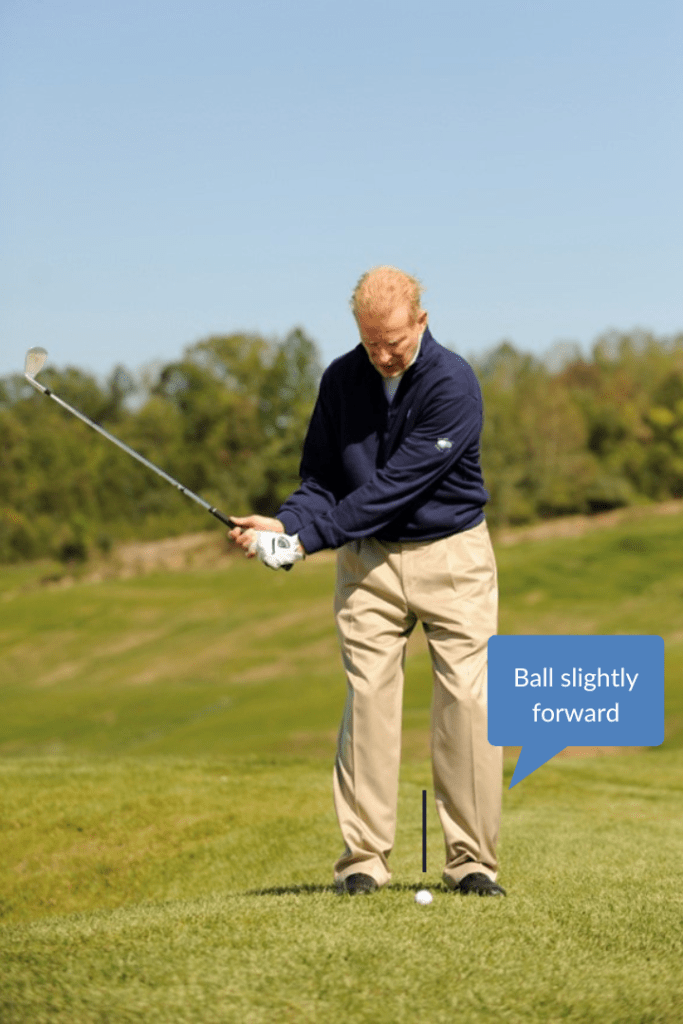How to Hit a Lob Shot

By Dr. T. J. Tomasi, Keiser University College of Golf Senior Faculty and Director of Research

I keep my weight on my front side to hit down on the ball while I set my wrists early to hit the ball high.

Notice two things (1) my forearms have not rolled over, so the face is still open and pointing at the sky, and (2) I’ve allowed my left wrist to cup, a move that adds even more loft.
Around the greens, I recommend keeping the ball on the ground whenever it’s feasible because it’s easier to judge a rolling ball than a high flying one. Thus, the lob is the last shot you should select given the accuracy sequence “putt it first; if you can’t putt it, chip it; if you can’t chip it, pitch it; and only when you have to, do you lob it.”
But even though the lob shot is the hardest to judge, there are some situations, such as playing over trouble (bunkers, water, etc.) to a tucked pin, where you need a high, soft shot. The key is to make a silky, flowing swing, moving the clubface with the rotation of your body, absent any sudden manipulation by your arms or hands. Since your body leads the way throughout this swing, your clubhead stays trapped behind you, and therefore your clubface remains open through impact allowing the bounce on the bottom of your sand wedge to slide gently under the ball as you swing to a full finish.
Set-Up
There are several variations to the lob, including the bullet lob played back in your stance that takes one bounce then softly dribbles to a stop; the high, cut lob, where you play the ball forward off your front heel, open the face, and swing across your body with no release of the face – but our topic today is the standard lob.
Since the lob shot stops primarily due to its high, soft arc, position your ball just forward of the center of your stance (see photo). Make sure the butt end of your golf club is in the mid-line of your body. With heels a little less than hip-width apart, open your stance so your body is open to the target, anchoring the majority of your weight in your front hip joint, establishing it as the rotational center throughout your swing. Once your setup is complete, the operational word that governs your swing is soft rotation.
Start your swing by simply turning your chest away from the target so that everything moves away from the ball as a unit. Make sure to cock your wrists early; your mantra here is ‘low hands-high clubhead,’ a condition that unlocks the loft of the clubface. Note that in executing the lob shot, there is a turn but no weight shift.
Your downswing is characterized by the sweet surrender to gravity, a phrase I use to emphasize the absence of manipulation as you allow your clubhead to fall to the ball – this means (1) no lateral body motion, (2) keeping your head still behind the ball and (3) certainly no hitting with your hands. If you simply rotate your body around your front hip, your clubhead comes to impact with a slightly open face, perfect for a high, soft shot.
The lob shot requires a long backswing plus a long follow-through; think of it as “long to long.” But here is the key: Your arms move at a slow but constant pace with no bursts of power. The tough part of the lob shot is convincing yourself that you can take such a long swing for such a short shot.
To get your brain used to the length and non-violence of the swing, practice hitting a lot of 10 to 15-yard pitches until you can produce the high, soft trajectory every time with only one or two bounces and a roll after landing.
Learn more!
Want more tips? If you want to take your game to the next level, contact our team at Keiser University’s College of Golf & Sport Management today. With our dedication and experience, together, we can elevate your game to new heights. Give us a call today at 888-355-4465.












